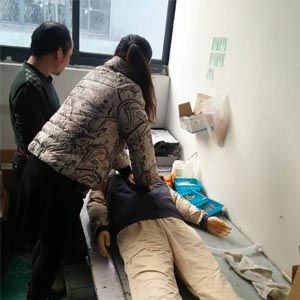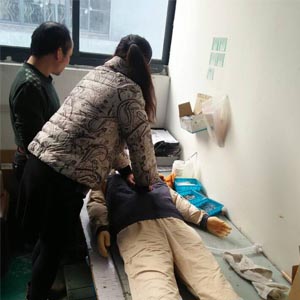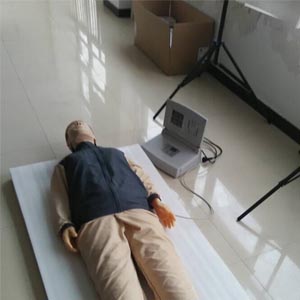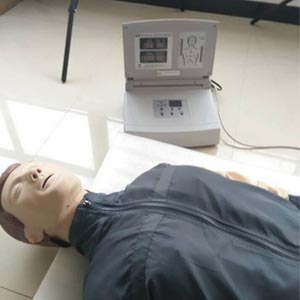
Can Fully automated computer CPR simulators reduce error rates in clinical first aid training?
Article tag: Fully automatic computer CPR simulator CPR model BIX-CPR280

Automatic computer cardiopulmonary resuscitation simulator has become a key tool in current first aid training because of its high simulation, high feedback and high precision. Combining data and cases, we can see that this device can significantly reduce the error rate in clinical first aid training and help students master first aid skills more efficiently. As the technology continues to advance, its role in medical education will become more important, training more high-level emergency personnel for the medical industry, and striving for more survival opportunities for patients.
...
Cardiopulmonary resuscitation (CPR), as the core technique in first aid, requires emergency personnel to have high operational accuracy and rapid response ability. However, traditional first aid training is often limited by a number of factors, such as the disconnect between theory and practice, insufficient operational feedback, and limited opportunities for trainees to practice. These factors directly affect the performance of emergency personnel in actual scenarios and increase the risk of operational errors. In recent years, automatic computer cardiopulmonary resuscitation simulator has gradually become an important tool in the field of first aid training with its accurate feedback and high degree of simulation design. So, can it effectively reduce the error rate in clinical first aid training? We explore this issue from the perspective of medical technology, combined with data support and case studies.
Automatic computer cardiopulmonary resuscitation simulation human technical advantages

Fully automatic computer CPR simulator
Automatic computer cardiopulmonary resuscitation simulator is a first aid training equipment designed on the basis of high simulation technology. It simulates real patient vital signs, such as pulse, breathing and blood circulation, and provides real-time feedback. The following are its main technical features:
1. Real-time operation feedback
With built-in sensors, simulators can monitor the rescuer's depth, frequency, position, and ventilation effects, and correct them with on-screen or voice feedback. This function effectively reduces the student's blind spot in the operation, making each exercise more accurate.
2. Simulation scenario simulation
The equipment can simulate different emergency scenarios, such as cardiac arrest or suffocation, to help students familiarize themselves with various clinical complications and improve their resilience.
3. Operation data recording and analysis
The simulator's built-in data analysis system can record every step of the student's operation and generate detailed reports for the convenience of the instructor's targeted guidance. This quantitative analysis significantly improves the scientific and personalized level of training.
Data support: Evidence to reduce error rates

According to a study in the Journal of Emergency Medicine, after the introduction of fully automated computerized CPR simulators in first aid training, trainees' operational accuracy improved by an average of 25%, while the rate of missing critical steps dropped by 18%. In addition, another report published by the American Heart Association (AHA) found that first responders trained with simulated equipment achieved the required depth and frequency of compressions in real emergency situations 30 percent higher than those who did not use the equipment.
These data show that real-time feedback and precise guidance from simulators can significantly reduce errors and improve performance in real environments.
Case study: The effect of clinical application of simulated human training
The emergency department of a general hospital introduced a fully automatic computerized cardiopulmonary resuscitation simulator as a standard training tool for medical staff. During the three-month intensive training, 80 emergency department physicians and nurses were instructed in simulated human operations. After the training, the medical staff's success rate in simulated field tests increased by 35 percent and the number of errors decreased by 20 percent. Especially in terms of pressing depth and ventilation coordination, the students showed more precision.
Among them, an emergency doctor in the actual treatment of cardiac arrest patients, thanks to the experience gained in the training of simulators, can quickly judge the patient's state and accurately rescue, successfully saving the patient's life. This case not only shows the practical value of simulation equipment, but also shows its outstanding role in reducing the first aid error rate.

From the perspective of industry to see the future application prospects
The popularization of fully automatic computerized cardiopulmonary resuscitation simulators not only provides efficient training tools for hospitals and medical education institutions, but also promotes the development of first-aid education to a higher level. At present, the device has been widely used in emergency centers and medical education institutions in many countries. With the continuous upgrading of technology and the gradual reduction of costs, this equipment is expected to be further popularized in the future and become a standard configuration of first aid training.
Automatic computer cardiopulmonary resuscitation simulator has become a key tool in current first aid training because of its high simulation, high feedback and high precision. Combining data and cases, we can see that this device can significantly reduce the error rate in clinical first aid training and help students master first aid skills more efficiently. As the technology continues to advance, its role in medical education will become more important, training more high-level emergency personnel for the medical industry, and striving for more survival opportunities for patients.

Marketing Center
Hong Kong, ChinaProduction Base
Shanghai, ChinaProducts
Contact Us
 Address: Hong Kong, China
Address: Hong Kong, China
 Phone:+86 19937901373
Phone:+86 19937901373
 Email:sophia@adahealthy.com
Email:sophia@adahealthy.com
 Mobile:+86-0379-65160607
Mobile:+86-0379-65160607








